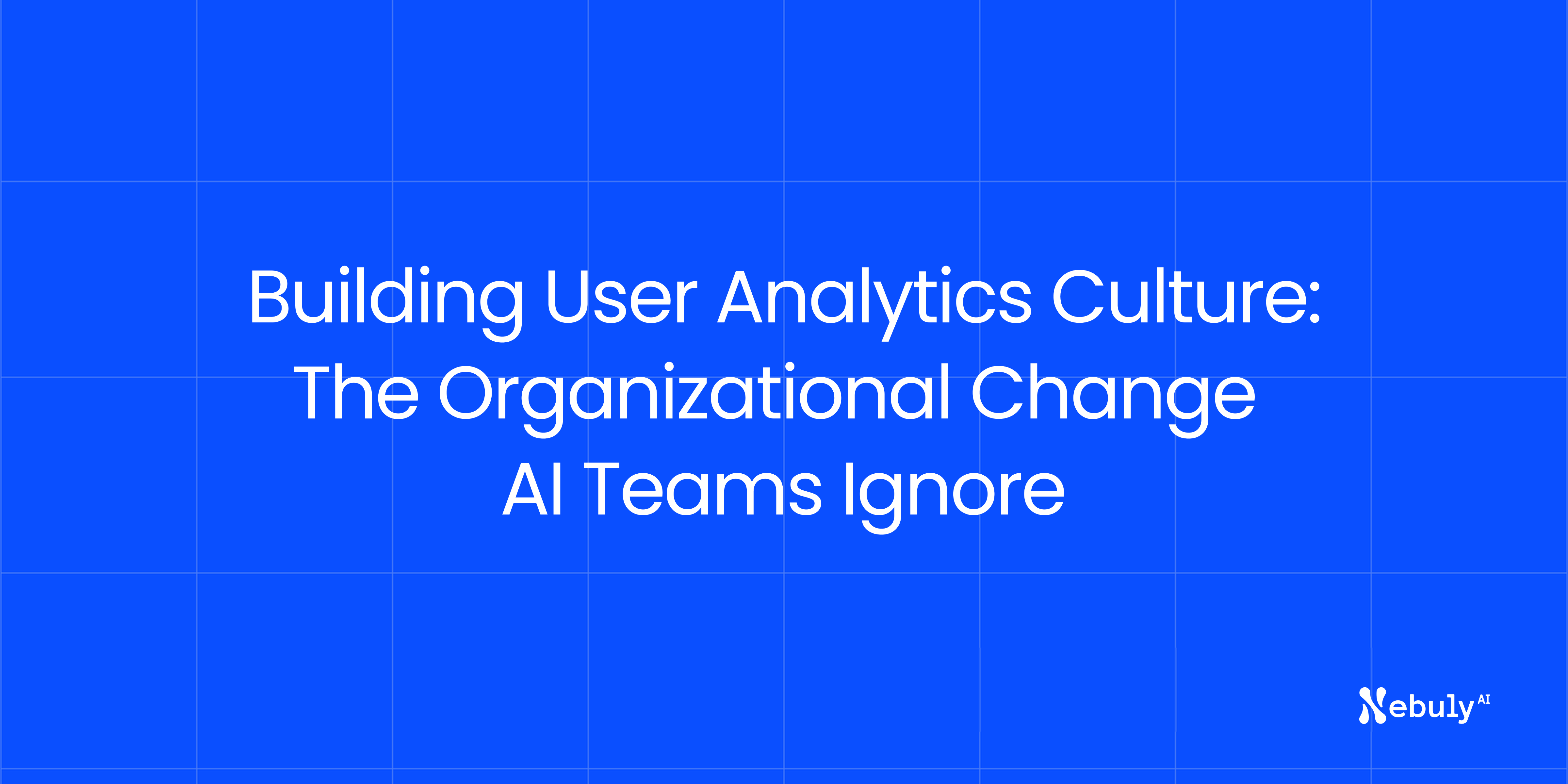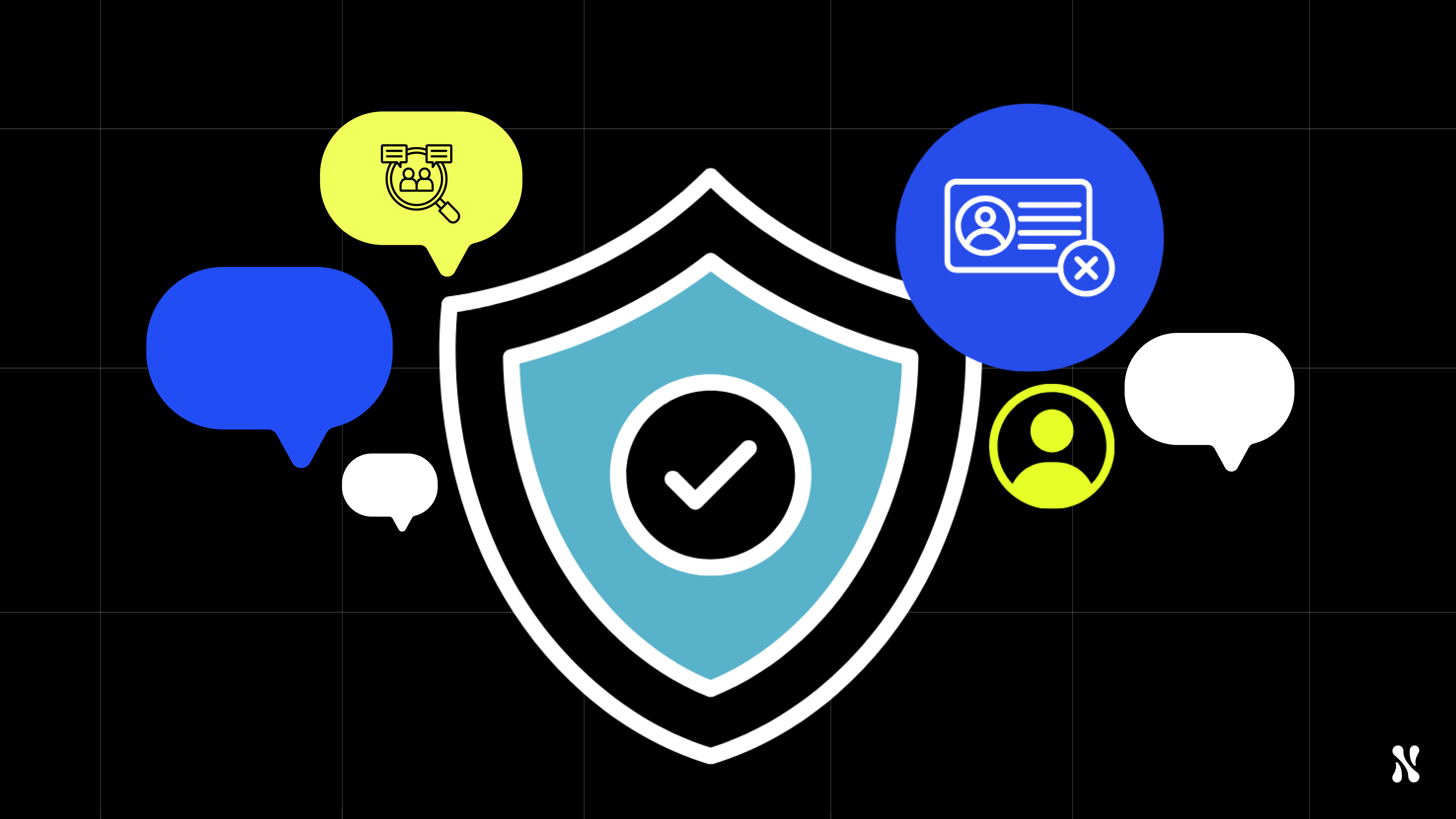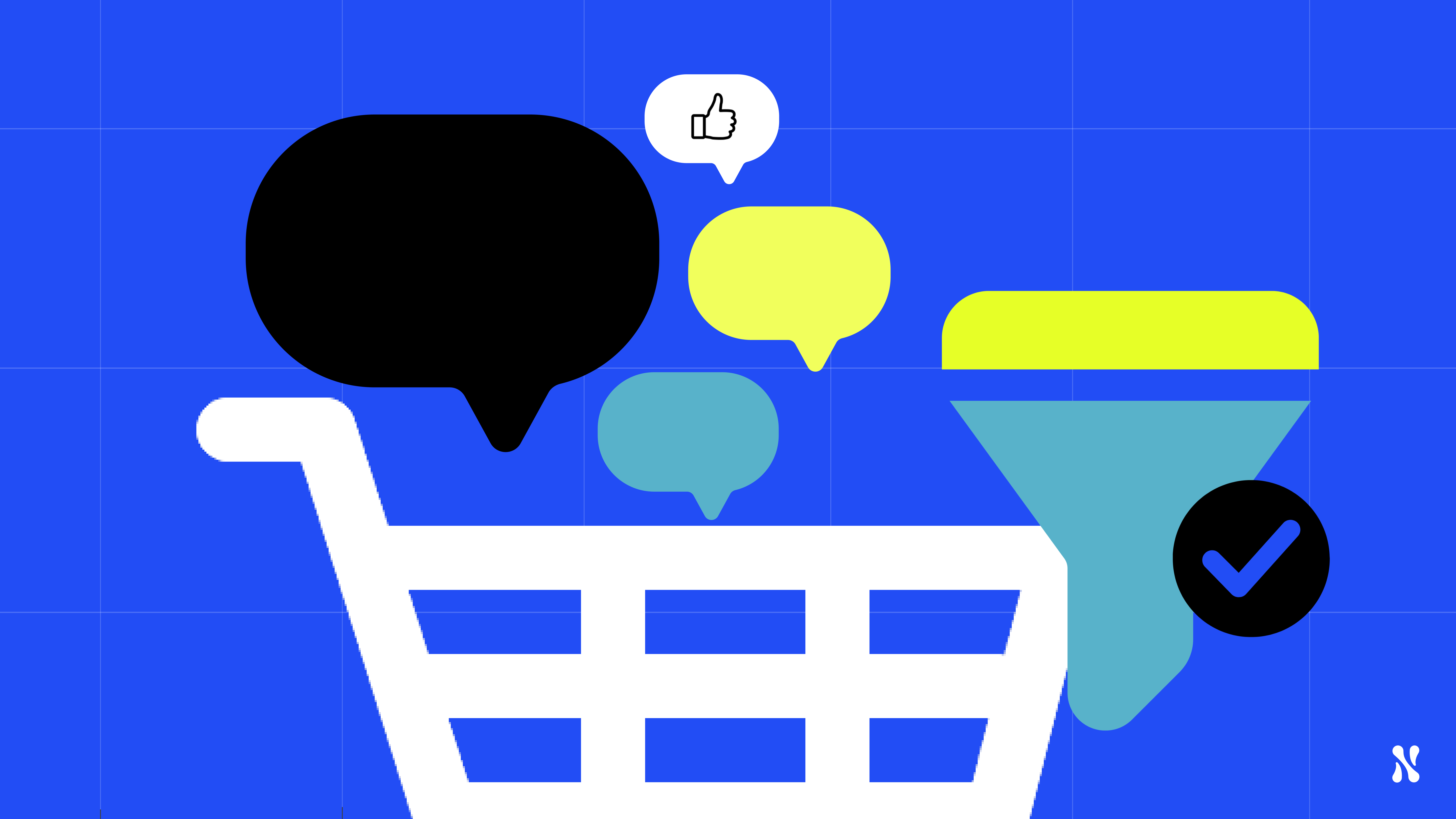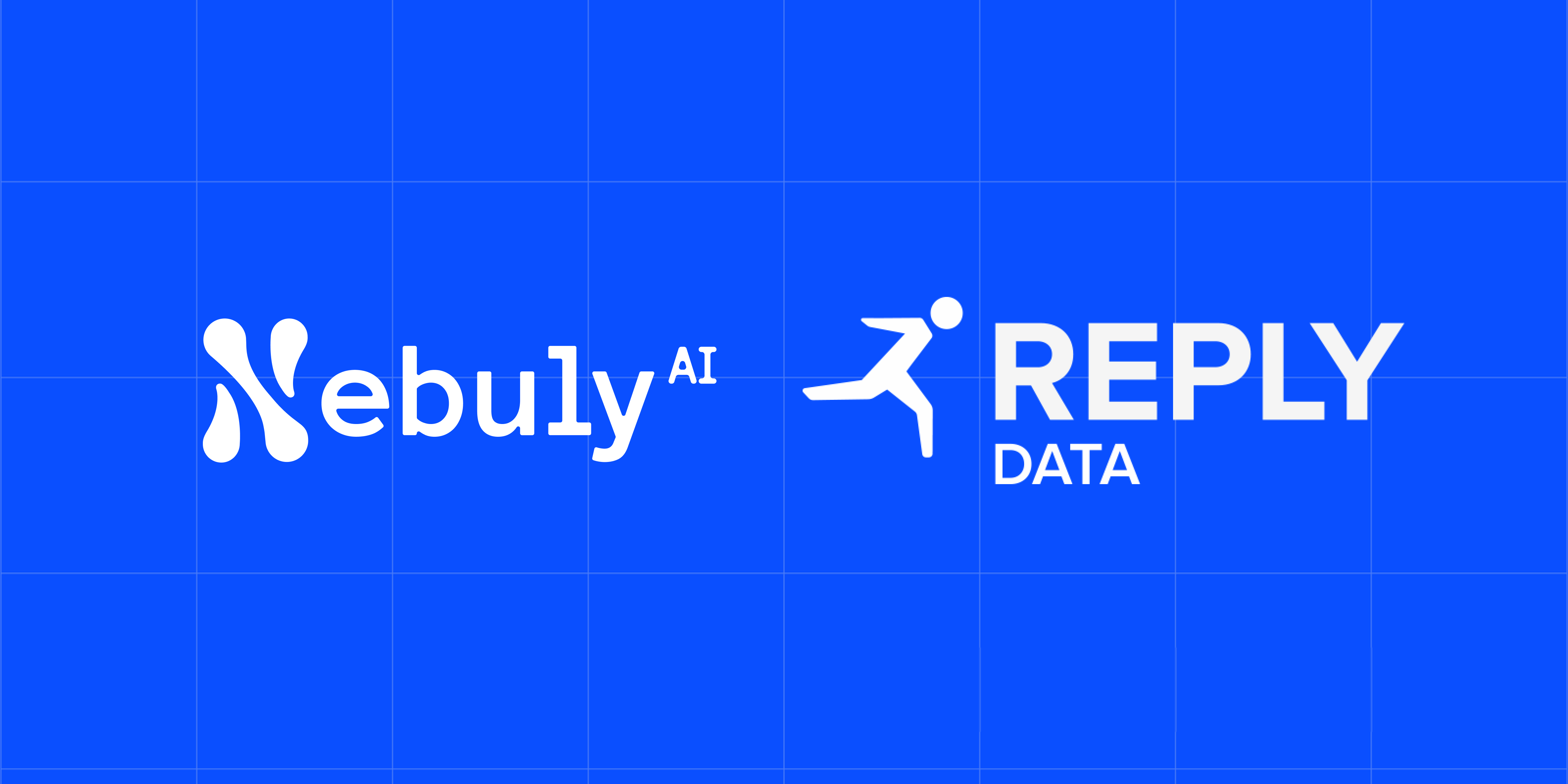Your AI deployment is technically flawless. The models are accurate, the infrastructure is scalable, and the user interface is intuitive. But six months later, adoption remains stubbornly low, and nobody can explain why users aren't embracing the system.
The missing ingredient isn't technical. It's cultural.
Most AI projects fail because organizations focus exclusively on building AI systems while ignoring the human systems required to understand and optimize them.
Building user analytics culture is the organizational change that determines AI success or failure. Here's how leading organizations create the mindset shift that makes AI adoption inevitable.
The Cultural Gap in AI Adoption
The Technical Success Trap
AI teams excel at solving technical challenges:
- Training high-performing models ✓
- Building scalable infrastructure ✓
- Creating user-friendly interfaces ✓
- Implementing security controls ✓
But they often overlook the organizational challenges:
- Getting teams to actually use AI tools
- Understanding why adoption stalls or succeeds
- Building processes for continuous optimization
- Creating feedback loops between users and developers
Result: Technically excellent AI systems that languish with low adoption and unclear business impact.
The "Build and Deploy" Myth
Traditional software development often follows a "build and deploy" model. AI systems require a fundamentally different approach: build, deploy, measure, understand, optimize, repeat.
This demands organizational capabilities that most companies haven't developed:
Data-Driven Decision Making: Using user behavior insights to guide AI development
Cross-Functional Collaboration: Breaking down silos between AI teams, business units, and end users
Continuous Learning: Treating AI deployment as the beginning of the optimization journey
User-Centric Thinking: Measuring success by human outcomes over technical metrics
Learn how to measure business value from GenAI products through user-centric approaches.
The Five Pillars of User Analytics Culture
1. Measurement Mindset
Current State: Teams measure what's easy to track (API calls, response times, error rates)
Target State: Teams measure what matters for users (intent fulfillment, satisfaction, task completion)
Culture Shift Indicators:
- Product managers ask "Did users accomplish their goals?" instead of "How many users logged in?"
- Engineering teams prioritize user experience metrics alongside technical performance
- Business stakeholders request user behavior insights over usage statistics
- Success is defined by user value delivered over features deployed
2. Human-Centric Analysis
Current State: Analytics focus on system performance and aggregate statistics
Target State: Analytics reveal individual user journeys, needs, and frustrations
Culture Shift Indicators:
- Teams regularly review actual user conversations over summary reports
- User personas are based on observed behavior over demographic assumptions
- Product decisions reference specific user interaction patterns
- Success stories include qualitative user feedback alongside quantitative metrics
3. Collaborative Intelligence
Current State: AI teams work in isolation from business users and stakeholders
Target State: Regular collaboration between AI builders and AI users drives optimization
Culture Shift Indicators:
- Weekly or bi-weekly user feedback sessions between technical and business teams
- Business stakeholders contribute to AI training data and optimization priorities
- User insights inform technical roadmap decisions
- Cross-functional teams celebrate user success stories over technical milestones
4. Continuous Optimization
Current State: AI systems are built once and maintained for stability
Target State: AI systems continuously evolve based on user behavior insights
Culture Shift Indicators:
- Regular experimentation with different conversation flows and user experiences
- A/B testing is standard practice for AI interaction design
- User behavior data drives prompt engineering and model fine-tuning decisions
- Success metrics evolve as team understanding of user needs deepens
5. Proactive Problem Solving
Current State: Teams react to user complaints and support tickets
Target State: Teams anticipate user needs and problems through behavioral analytics
Culture Shift Indicators:
- Problems are identified through user behavior patterns before users complain
- Proactive outreach to users showing signs of frustration or confusion
- Preventive measures based on early warning signals in user interaction data
- Success measured by problems prevented over problems solved
Overcoming Cultural Resistance
The "We Already Have Analytics" Objection
Common Response: "We track usage in Google Analytics/Mixpanel/etc."
Reality: Web analytics tools weren't designed for conversational AI and miss crucial user experience signals.
Culture Change Strategy:
- Start with small pilot demonstrating unique insights from user analytics
- Show specific examples of user problems that existing tools miss
- Connect user analytics insights to business outcomes and ROI
- Gradually expand analytics sophistication as teams see value
The "Too Complex" Resistance
Common Response: "Our team doesn't have time to analyze all this user data."
Reality: User analytics saves time by focusing optimization efforts on highest-impact areas.
Culture Change Strategy:
- Begin with automated insights and dashboards that require minimal manual analysis
- Provide training on interpreting user behavior data in AI contexts
- Create templates and frameworks for common analysis tasks
- Demonstrate ROI through faster problem identification and resolution
The "Not Technical Enough" Pushback
Common Response: "User feedback is subjective; we need objective technical metrics."
Reality: Technical metrics don't predict business success; user behavior metrics do.
Culture Change Strategy:
- Show correlation between user satisfaction and business KPIs
- Present user analytics using data visualization and statistical rigor
- Connect user behavior patterns to technical optimization opportunities
- Demonstrate how user insights guide more effective technical improvements
Discover how AI-first operating models integrate user analytics into organizational DNA.
Building the Culture: A Practical Roadmap
Phase 1: Foundation
Establish Measurement Infrastructure:
- Implement user analytics platform for AI conversations
- Define key user success metrics aligned with business goals
- Create initial dashboards for different stakeholder groups
- Train core team members on user behavior analysis
Early Wins:
- Identify one obvious user pain point through conversation analysis
- Fix the problem and measure impact
- Share success story across organization
- Use win to build support for expanded user analytics adoption
Phase 2: Engagement
Cross-Functional Integration:
- Regular user behavior review sessions with business stakeholders
- Include user analytics in product planning and roadmap discussions
- Create user success metrics for individual team members and projects
- Establish feedback loops between user insights and technical development
Skill Building:
- Train product managers on conversation flow analysis
- Educate business teams on interpreting user sentiment and intent data
- Develop internal expertise in user experience optimization for AI
- Create playbooks for common user analytics tasks and insights
Phase 3: Optimization
Advanced Analytics:
- Implement predictive user behavior modeling
- Create user segmentation based on interaction patterns
- Build automated alerts for user experience degradation
- Develop personalization strategies based on user analytics insights
Cultural Integration:
- User analytics insights inform performance reviews and promotions
- Success stories celebrate user impact alongside technical achievements
- New AI projects include user analytics from day one
- Organization develops reputation for user-centric AI development
Phase 4: Innovation
Strategic Advantage:
- User analytics drives competitive differentiation in AI products
- Organization becomes known for exceptional AI user experiences
- User insights inform broader business strategy and product development
- Culture of user analytics spreads beyond AI to other technology initiatives
Measuring Cultural Change
Leading Indicators
Meeting Content: Percentage of AI-related meetings that include user behavior discussion
Decision Making: Frequency of product decisions justified using user analytics data
Problem Identification: Ratio of proactively vs reactively identified user issues
Cross-Functional Collaboration: Number of regular touchpoints between AI and business teams
Lagging Indicators
User Adoption: Sustained growth in AI system usage and engagement
User Satisfaction: Consistent improvement in user experience metrics
Business Impact: Clear connection between AI investments and business outcomes
Organizational Learning: Faster identification and resolution of AI user experience issues
The Competitive Advantage of Analytics Culture
Market Differentiation
Organizations with strong user analytics culture create AI products that users actually want to use. This leads to:
Higher Adoption Rates: Users embrace AI tools that understand and serve their needs
Better Business Outcomes: AI systems deliver measurable value because they're optimized for human success
Competitive Moat: Superior user experience becomes difficult for competitors to replicate
Innovation Acceleration: Deep user understanding enables breakthrough product improvements
The Network Effect
User analytics culture creates virtuous cycles:
- Better user insights → Better AI experiences → Higher adoption → More user data → Even better insights
Organizations that master this cycle build increasingly powerful competitive advantages over time.
The Cultural Transformation Imperative
The future belongs to organizations that understand their AI users as deeply as they understand their AI systems.
Technical excellence in AI is becoming table stakes. The sustainable competitive advantage lies in organizational capabilities like the culture, processes, and mindset that turn AI systems into user-beloved products.
Building user analytics culture isn't just about better measurement. It's about building better organizations that create better AI experiences.
The companies that invest in this cultural transformation today will dominate the AI-driven markets of tomorrow.
Ready to build user analytics culture in your organization? Discover how leading companies create the organizational changes that turn AI technical success into user adoption and business impact. Book a demo with us.






